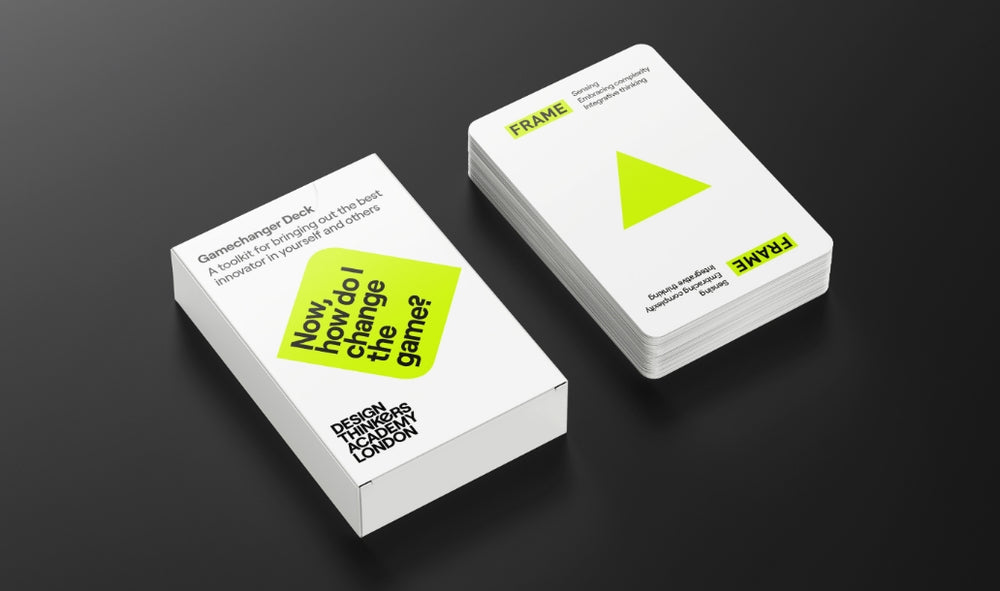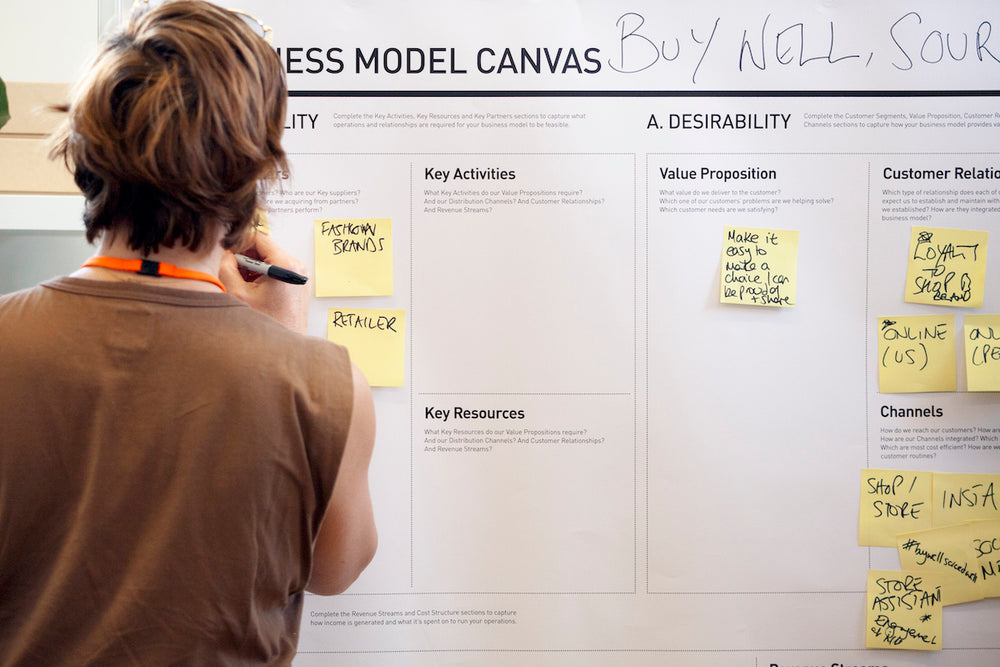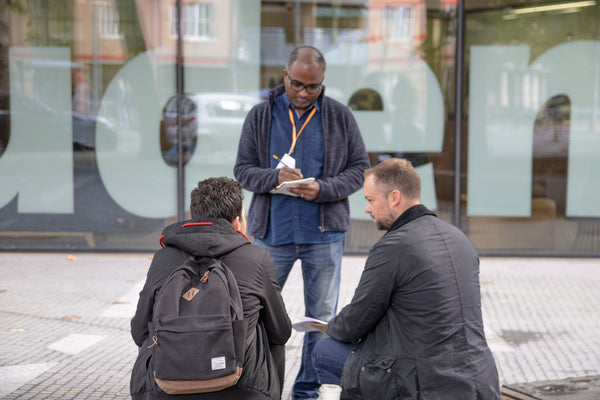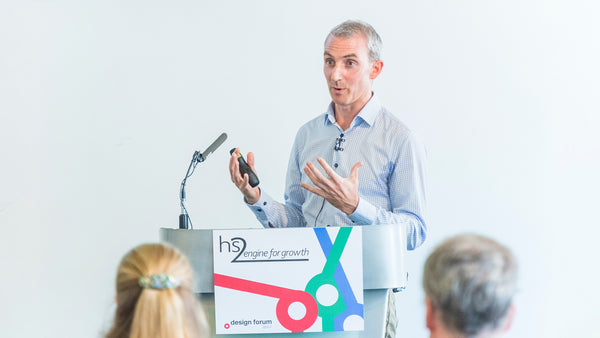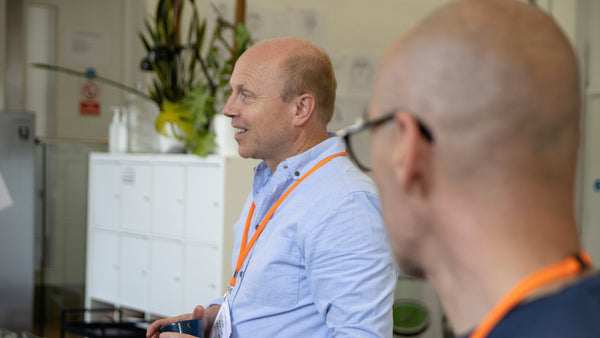Is design thinking the new Total Quality Management (TQM)? In this long read, Jeanne Liedtka makes the case that design thinking can do for innovation what TQM did for quality. This approach can drive transformative change, however, it is about more than feel good “hackathons” and requires hard graft.
Could design thinking be the TQM of the 21st century? Can it drive the same kind of transformational shift in innovation capabilities that TQM drove in quality?
Almost ten years of research at the Darden Business School on organic growth and innovation suggest to us that it could. Let’s look at the parallels. Emerging post-WWII in Japan and achieving prominence in the West only decades later, Total Quality Management’s impact has been felt in nearly all organisations in every sector of the world economy. Its influence continues today, underlying two prominent current practices: Six Sigma and Lean.
Berkeley professor and TQM expert Robert Coles argues that a paradigm shift occurred in how organisations thought about quality as TQM spread. Once upon a time, quality was seen as the domain of experts, decoupled from organisational strategy and day to day practice. It was seen as one functional specialty among many. Post TQM, quality became a strategic organisational capability “maximising organisational behaviour to enhance the satisfaction of present and future customers” that provided a “common corporate language for problem identification and problem-solving.”
In this new view, quality was a core aspect of doing business successfully and, as such, was the concern of all employees and integrated into planning, employee training and strategy development.
But it took more than an increasing interest in quality to drive transformative change: it took putting something concrete in the hands of managers. It necessitated moving beyond telling great stories to embedding a new set of tools and processes. In other words, it took Total Quality Management – systematic, teachable, and tool-based – to move the new view of quality from high level rhetoric to new organisational practice.
It’s may be hard to believe, but when we started our research at Darden on organic growth, most of the managers we talked to looked at innovation in a similarly limited way – they felt that innovation was the Product Development Department’s job. Given the buzz around innovation today, that’s hard to believe – the shift underway in the way organisations think about innovation is happening fast. And this, we believe, is the driver of the increased interest in design thinking and the kinds of changes in organisational behaviours and mindsets that it encourages.
The “old” paradigm viewed innovation akin to quality assurance: isolated in a set of experts operating in a particular functional area, focused on products, and largely decoupled from organisational strategy. Contained within this view was a particular take on design – though it played a critical role in the creation of new products, it was often seen by operating managers as merely the “last decoration station on the way to market,” as P&G’s Claudia Kotchka so memorably described it – an aesthetic activity rendering products attractive and appealing.
In contrast, in the new view of innovation as a core strategic capability, design thinking has a central role to play, providing a common language and a problem-solving methodology to operationalise and scale innovation as an organisational competency, one that accelerates the ability to achieve strategic objectives, whether those involve traditional business outcomes like profitability or social outcomes like improving health outcomes or empowering the disabled.
We have studied design thinking being used to address issues ranging from processing vendor invoices in Istanbul, to increasing blood donation in Peru, helping impoverished farmers adopt new practices in Mexico, keep at risk California teenagers in high school, and reduce emergency room visits in Dallas, Texas and ICU patient stays in Melbourne, Australia. We have even seen it help manufacturers and government regulators find common ground in Washington, DC.
But using design thinking to make innovation a genuine organisational capability means moving beyond great stories and new vocabulary – it requires old fashioned process and tools, the kind that we know institutionalising anything in organisations requires. That is the promise of design thinking.
"Design thinking can do for innovation what TQM did for quality: introduce a common language and teachable methodology that equips non-designers (meaning everybody else in the organisation) at all levels to learn the new ways of thinking and behaving that innovation demands."
First, our research suggests that implementation of a more structured methodology can help. Structure seem antithetical to innovation – yet ample management research demonstrates that capability-building requires codification of process and tools.
Second is the need for rigorous training. Given managers’ unfamiliarity with design concepts, the often challenging level of ambiguity and discomfort involved in its practice, and the counter-cultural value system underlying the approach, the careful design of teaching interventions is critical to success. High performing organisations in the TQM ramp-up gave employees 40 to 80 hours of training per year. We see no evidence that developing genuine competencies in design thinking should require less.
Our experience at Darden in classrooms both virtual (through online coursework like Coursera) and face to face, demonstrates that design thinking can do for innovation what TQM did for quality: introduce a common language and teachable methodology that equips non-designers (meaning everybody else in the organisation) at all levels to learn the new ways of thinking and behaving that innovation demands.
Third, access to key stakeholders and decision rights to conduct experiments are essential to implementation of design tools. Second-hand knowledge of stakeholders, filtered through organisational gatekeepers, rarely contains enough depth or originality to foster deep insights and inspire creativity. Similarly, the ability to conduct even small experiments is often withheld from all but a small group of employees.
The challenge in building a strategic capability is that many would-be design thinkers lack all these aspects – training, confidence, access to stakeholders, time and enough autonomy to conduct experiments.
No organisation in our research better exemplifies what creating an infrastructure of support for design thinking looks like than Intuit, producer of software products Quicken and Turbotax. One of the most distinctive aspects of their story is the comprehensiveness of the supports they have put in place to help employees succeed at using design thinking.
They offer workshops on design tools and office hours for coaching on projects. They bring stakeholders into the cafeteria every week to make exploring their needs and getting their feedback easy and effective. They foster networks of like-minded individuals – design thinking training is provided within a support network. Intuit uses employees’ analytical brains to unleash their creative brain by introducing structure to simplify the new behaviours and increase the comfort with experimentation.
Will the promise of design thinking be fulfilled? Will it become the next TQM? The jury is still out. What is clear is that transformation of the kind we are talking about will involve more than feel-good “hackathons” – it will require a lot of hard work.





